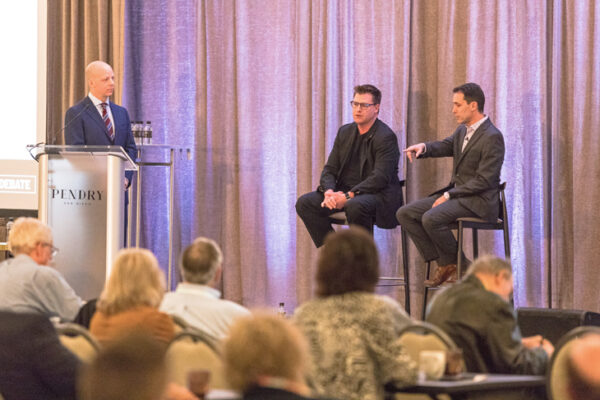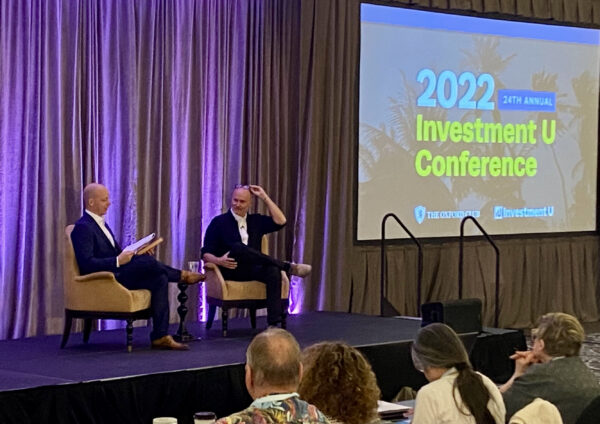Do More With Less: Ending Boring Meetings
- Last month, Mark Ford wrote about the dangers of inefficient meetings and the waste they can create for your business.
- Today, he explains how you can improve your meetings by setting a clear purpose and inviting the right people.
I was never a big fan of meetings. But, as the little businesses I started grew larger, I realized that meetings were absolutely necessary.
With the advent of cyber employees, meetings became more necessary. Employees who are physically removed from headquarters are less likely to hear about developments casually on smoke and coffee breaks.
Yes, for somebody who never really liked meetings, I’ve seen them start to play a huge role in my working life.
Because I never liked them much, I’ve tried to learn as much as I can about how to improve my meetings: making them efficient, effective and necessary. Due to this research, I believe that I’ve learned a lot about how to run productive meetings.
A while back, I saw a short article on this subject in The Wall Street Journal. The article, by Sue Shellenbarger, claims that good managers identify the purpose of meetings first. Then, they use that purpose to determine how many people need to be there. She then gives recommendations for each purpose.
For the most part, I find her thoughts to be insightful and comprehensive. Her suggestions are smart and sensible. The piece includes a lot of tricks that I’ve learned through my own experience, as well as several that I haven’t yet but will certainly try to implement.
Shellenbarger’s meeting categories include these four common purposes:
- Weighing a problem
- Making a decision
- Setting the agenda
- Brainstorming.
Here is her advice for each, in brief, amended slightly by yours truly.
Weighing a Problem (or Opportunity): 4 to 6 People
Invite enough people to bring needed experience but not so many that the discussion flies off course. Some may bring technical expertise, others larger or longer-term perspectives, and one perhaps may keep the discussion on topic and moving toward a conclusion.
Don’t make the mistake of thinking “the more the merrier.” At some point in the process, you will need to inform a large number of employees about major changes to policies or procedures, but not when you are discussing a problem or opportunity for the first time. It is worth clarifying that, although the number of people in the room is important to consider, deciding who those people are is just as vital.
Making a Decision: 7 to 10 People
Shellenbarger suggests the ideal number of people for making a decision is seven based on research by Michael Mankins. For every extra person at such a meeting, you decrease the likelihood of making a sound decision by 10%. According to Mankins, “By the time you get 17 people, the chances of your actually making a decision are zero.”
If you feel more people must be included, consider breaking the decision into two or three parts. Then, have seven to 10 people participate in each. While having several meetings may seem less efficient than just having one meeting with more people, Shellenbarger disputes that with confidence… In my experience, she’s correct.
Setting the Agenda: 5 to 15 People
Some businesses – such as restaurants and other service businesses – need meetings involving large numbers of people. When the purpose is to convey an agenda and/or set priorities for the day, the meeting needn’t take long.
Shellenbarger makes the wise suggestion of making it a stand-up meeting and allowing only some limited time (say, two minutes) for discussion on any point. These meetings work only when the boss or some well-respected figure acts as the leader.
Brainstorming: 10 to 20 People
I personally prefer brainstorming sessions of three people, two of whom have to be very experienced and very smart. In Ready, Fire, Aim: Zero to $100 Million in No Time Flat, I put it this way:
You need a minimum of three people to brainstorm. Two works better than one, but three works much better than two. The problem with two is that you often find the discussion getting into a rut. You say one thing. Your brainstorming partner says something else. You repeat your position. She repeats hers. Eventually, the conversation stalls. With three people, this seldom happens.
But there are times when you need larger groups. In such cases, you need a strong leader and a set of rules that – at the outset – discourages or eliminates debate and/or criticism, and sets a protocol for whittling down all the suggestions to a useful few.
One way of doing the former is to have suggestions made anonymously and in written form. These can be made either before the meeting or during the meeting, with prompting from questions or comments.
I was struck by a Harvard study that Shellenbarger shared. It debunks the commonly acted upon notion that having more people in a brainstorming session helps to create more good ideas.
I have some final thoughts… As somebody who has survived a lifetime’s worth of disorganized, sloppily run meetings, I can say that I concur with almost all of Shellenbarger’s thoughts in this article. One can certainly have “too many cooks in the kitchen,” though more important than the quantity of people is the quality.
For each style of meeting, take some time to think about the roles or personalities that should be in the room.
You can read Shellenbarger’s full Wall Street Journal article here.
[adzerk-get-ad zone="245143" size="4"]About Mark Ford
Mark Morgan Ford is a lifelong practitioner of writing, teaching, entrepreneurship, martial arts and philanthropy. He has written more than two dozen books on business, entrepreneurship and wealth building (several of which were New York Times and Wall Street Journal bestsellers). As an entrepreneur, he has been involved in dozens of multimillion-dollar businesses, including one whose revenues exceeded $100 million and another that broke the billion-dollar mark. And as a real estate investor, he has been involved in more than a hundred projects and developments, from single-family homes to apartment buildings, office buildings and resort communities. He shares the lessons learned from his decades as an entrepreneur and investor with readers of Manward Digest.






